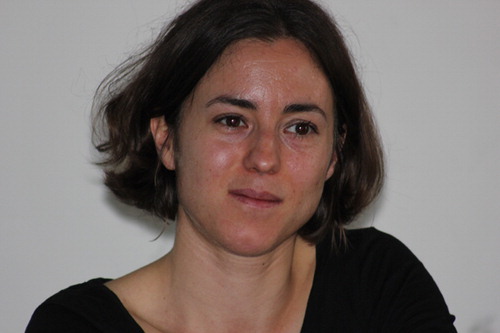Decay Resistance of Acetic Anhydride Modified Wood - A Review
Testing of modified woods has proceeded rapidly. In this important review paper, Dr Gry Alfredsen of the Norwegian Forest and Landscape Institute summarises the existing knowledge related to the fungal deterioration of acetic anhydride modified wood. Importantly, the paper highlights the future research needs and opportunities. Furthermore the work performed statistical analyses to quantify what factors contribute most to performance.
Decay resistance of acetic anhydride modified wood - a review. G. Alfredsen, P. O. Flæte and H. Militz, pp. 137–143.
ANALYSING THE DENSITY PROFILE CHARACTERISTICS OF SURFACE DENSIFIED SOLID WOOD USING A COMPUTATIONAL APPROACH
The surface density of wood can be increased by suitable softening and compression treatments. This can reduce porosity, but more importantly, since density correlates well with the mechanical and strength properties of wood it gives the possibility of increasing the density of wood species that would otherwise have too low a density.
Following experiments using a number treatments with variables of temperature, pressure and moisture content, Kristiina Laine and her team from Aalto University, Finland analysed the results using a computational approach. It was found that compression ratio and press closing time had the strongest effect on the density profile as well as the hardness and elastic recovery.
Analysing the density profile characteristics of surface densified solid wood using a computational approach. K. Laine, T. Antikainen, L. Rautkari and M. Hughes, pp. 144–149.
SURFACE PROPERTIES OF TANNIN-TREATED WOOD DURING NATURAL AND ARTIFICIAL WEATHERING
Tannins are the natural way that plants use to protect themselves. Gianluca Tondi at Salzburg University, Austria, tested novel tannin based formulations tosee how good they were at preventing the degradation of wood surfaces from weathering. Various tests were carried out before and after weathering including colour measurements. Several analytical techniques were used and showed that weathering mainly degrades the aromatic component of wod.
Surface properties of tannin-treated wood during natural and artificial weathering. G. Tondi, T. Schnabel, S. Wieland and A. Petutschnigg, pp. 150–157.
PRELIMINARY STUDIES FOR THE USE OF DYNAMIC MECHANICAL ANALYSIS (DMA) TO VERIFY THE INTENSITY OF THERMAL WOOD MODIFICATIONS
Colour change and/or mass loss after thermal modification are directly related to the performance. Rather than testing previously modified wood, Andreja Kutnar of the University of Primorska, Slovenia shows how the technique of Dynamic Mechanical Analysis can be applied during the heat treatment process. The technique is well established for the testing of plastics. In this paper she used the technique to identify the visco-elastic response of Spruce and Beech while being heat treated.
Preliminary studies for the use of dynamic mechanical analysis (DMA) to verify the intensity of thermal wood modifications. A. Kutnar, R. Widmann and I. Brémaud, pp. 158–165.
THERMAL WOOD MODIFICATION CHEMISTRY ANALYSED USING A VAN KREVELEN REPRESENTATION
The chemical composition of wood changes during thermal modification processes. Wim Willems at Firmolin Technologies BV, Netherlands mapped widely varied wood species in a van Krevelen diagram. The results suggest that a common modification chemistry is shared by these wood species. The largest effects can be explained by dehydration reactions, followed by decarboxylation reactions. Wim Willems proposes a theory to relate these reactions to changes in polarity and redox character, which in turn are modeled to the effects on water retention and fungal resistance of thermally modified wood.
Thermal wood modification chemistry analysed using a van Krevelen representation. W. Willems, C. Mai and H. Militz, pp. 166–171.
STRUCTURAL DESIGN WITH ACCOYA® WOOD
Acetylated Radiata Pine, marketed as Accoya® has achieved great market success in just six years and has shown its potential even for structural use. However there is limited engineering data and so each application has had to be evaluated separately. In this paper Ferry Bongers of Accsys Technologies, Netherlands, shows how research at various universities and institutes combined with work by structural engineers has made it possible to produce a handbook that can assist designers and structural engineers to produce reliable designs using Accoya®.
Structural design with Accoya® wood. F. Bongers, J. Alexander, J. Marcroft, D. Crawford and R. Hairstans, pp. 172–176.
PERFORMANCE OF CLEAR COATINGS ON MODIFIED WOOD EXPOSED TO THE WEATHER FOR TWO YEARS IN AUSTRALIA
Australia is noted for the challenges created for wood exposed out of doors owing to the intense UV radiation. Clear coatings are especially susceptible to degrade. In this paper, Stephan Vollmer working at the University of British Columbia, Canada, evaluated the performance of clear coatings that had first been treated to improve their photostability. The results show that the performance of the coatings can be improved but is dependent on a number of variables that must all be controlled.
Performance of clear coatings on modified wood exposed to the weather for two years in Australia. S. Vollmer and P. D. Evans, pp. 177–182.
THE POTENTIAL OF X-RAY COMPUTED TOMOGRAPHY FOR 3D ANATOMICAL ANALYSIS AND MICRODENSITOMETRICAL ASSESSMENT IN WOOD RESEARCH WITH FOCUS ON WOOD MODIFICATION
We are all familiar with the medical use of tomography in scanners. The technique has now been developed to a much higher resolution and enables micro-densitometry measurements. In this paper Jan Van den Bilcke of Ghent University in Belgium discusses the potential for this new technique in the field of wood science.
The potential of X-ray computed tomography for 3D anatomical analysis and microdensitometrical assessment in wood research with focus on wood modification. J. Van den Bulcke, V. Biziks, B. Andersons, K.-C. Mahnert, H. Militz, D. Van Loo, M. Dierick, B. Masschaele, M. Boone, L. Brabant, Y. De Witte, J. Vlassenbroeck, L. Van Hoorebeke and J. Van Acker, pp. 183–190.
THE WATER VAPOUR SORPTION BEHAVIOUR OF THERMALLY MODIFIED WOOD
One of the major benefits of thermally modifying wood and densifying wood is the reduction in water sorption and associated dimensional changes. In this paper, Dr Callum Hill of Napier University, Edinburgh presents new findings concerning sorption isotherms and sorption kinetic behaviour. Hitherto, Fickian models have been used, but a new way of analysing the problem is the parallel exponential kinetics model that offers a better alternative.
The water vapour sorption behaviour of thermally modified wood. C. A. S. Hill, J. Ramsay, K. Laine, L. Rautkari and M. Hughes, pp. 191–196.
WETTABILITY OF ACETYLATED SOUTHERN YELLOW PINE
When wood is modified by acetylation various properties are altered. In particular surface energy changes which affects wettability. In turn, changes in wettability mean that coatings and adhesives must be tailored accordingly. In this study, Magnus Erik Per Wålinder of the KTH Royal Institute of Technology, Stockholm, Sweden measured the wettability of treated Southern Yellow Pine using the Wilhelmy technique that uses standard proble liquids to determine contact angle. Results show that early wood and latewood zones are affected differently.
Wettability of acetylated Southern yellow pine. M. Wålinder, P. L. Brelid, K. Segerholm, C. J. Long II and J. P. Dickerson, pp. 197–203.









